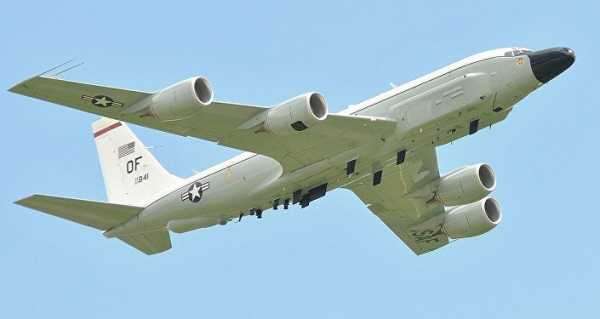
The US military has dramatically increased its daily spy plane flights near Chinese territory, with no area more intensely patrolled than the northern South China Sea, which connects to the Taiwan Strait and East China Sea.
A US spy plane made the closest pass to the Chinese coast ever recorded on Tuesday, flying just 25.3 nautical miles away.
According to the images shared by SCSPI of the aircraft’s flight path, the Combat Sent’s closest pass to the Chinese coast was immediately off the coast of Shantou, a prefecture-level city in eastern Guangdong Province near the southern end of the Taiwan Strait.
The USAF has two Combat Sent aircraft, which have a variety of specialized equipment for “locating and identifying foreign military land, naval and airborne radar signals,” according to a reference page on Military.com. Such an aircraft could be used to gather considerable information on People’s Liberation Army radar equipment, such as those operating out of the Shantou Waisha Airfield, a People’s Liberation Army Air Force (PLAAF) air base on the coast east of Shantou.

The RC-135U Combat Sent sits parked on the flightline while Airmen from the 178th Wing tour the plane Dec. 7, 2019 at Wright Patterson Air Force Base in Dayton, Ohio. The RC-135U Combat Sent provides strategic electronic reconnaissance information to the president, secretary of defense, Department of Defense leaders, and theater commanders.
US intelligence flights have not only increased in frequency, but have also gotten closer and closer to Chinese territory. Last July, a US Navy P-8A Poseidon flew within just 41 nautical miles of the Chinese coast off Zhejiang, just north of the Taiwan Strait, which was the closest pass a US spy plane had made in years. However, other US intelligence aircraft have also made very close passes while disguised as civilian aircraft. However, SCSPI, which noted the US aircraft changing their International Civil Aviation Organization hex codes in mid-flight, gave no range information.
“We’re united in the vision of a free and open Indo-Pacific region, where countries follow the rules, cooperate whenever they can, and resolve their differences peacefully. And in particular, we will push back if necessary when China uses coercion or aggression to get its way,” Blinken added.
Last month, two US Navy aircraft carriers, hauling nearly 160 aircraft between them, conducted joint military drills in the South China Sea with their strike groups of other warships.
Sourse: sputniknews.com






